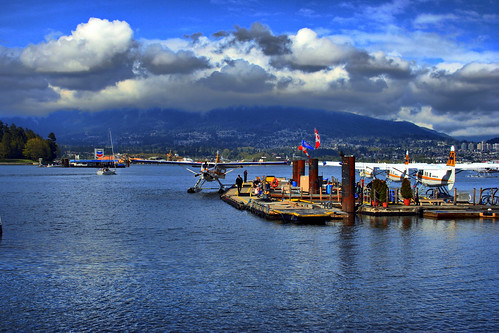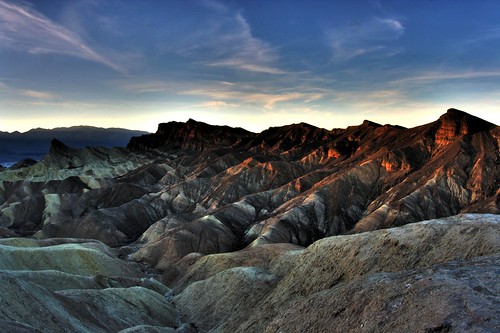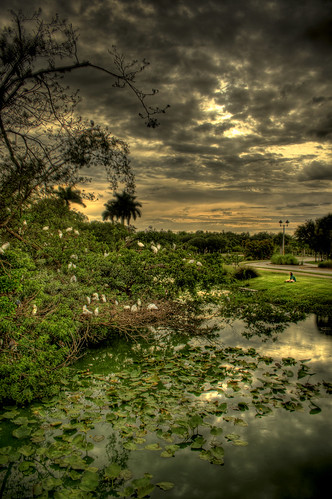What is HDR?
HDR is short for High Dynamic Range. It is a post-processing of taking either one image or a series of images, combining them, and adjusting the contrast ratios to do things that are virtually impossible with a single aperture and shutter speed. I would say that about 75% of my images use the technique, and if you are new to it, then you may notice a slightly different “look and feel” to my photographs. You should also probably note that HDR is a very broad categorization, and I really hate categorization. My process starts with using basic HDR techniques, but then there are many more steps to help the photos look more… let’s say… evocative.
I can talk a little bit more about the philosophy behind the photography style here for a quick moment. You might consider that the way the human brain keeps track of imagery is not the same way your computer keeps track of picture files. There is not one aperture, shutter speed, etc. In fact, sometimes when you are in a beautiful place or with special people and you take photos — have you ever noticed when you get back and show them to people you have to say, “Well, you really had to be there.” Even great photographers with amazing cameras can only very rarely grab the scene exactly as they saw it. Cameras, by their basic-machine-nature, are very good at capturing “images”, lines, shadows, shapes — but they are not good at capturing a scene the way the mind remembers and maps it. When you are actually there on the scene, your eye travels back and forth, letting in more light in some areas, less light in others, and you create a “patchwork-quilt” of the scene. Furthermore, you will tie in many emotions and feelings into the imagery as well, and those get associated right there beside the scene. Now, you will find that as you explore the HDR process, that photos can start to evoke those deep memories and emotions in a more tangible way. It’s really a wonderful way of “tricking” your brain into experiencing much more than a normal photograph.

Into The Darkness
Before sunrise on Lake Edith, Jasper National Park, the Canadian Rockies.
By NY_Doll


Before Sunrise
Early morning on glacial Lake Edith in Jasper National Park, the Canadian Rockies

Mirror
This is Mountain View Lake, located near the town of Canmore in Banff National Park, the Canadian Rockies. The elevation of this lake is 1480 meters and it's across the street from the Canmore Nordic Centre which was designed and developed for the 1988 Winter Olympic Games.

The Quarry
Quarry Lake Park is one of Canmore’s favourite recreational areas with spectacular views of Ha Ling Peak, Mount Lady MacDonald, and the Rundle Range. Quarry lake is located a few kilometers from the town of Banff on the edge of the Canadian Rockies and is approximately 100 metres deep in some areas

Vancouver Bay Sea Planes
Seaplane Dock on Vancouver Harbor. HDR image
By rgb48

HDR is short for High Dynamic Range. It is a post-processing of taking either one image or a series of images, combining them, and adjusting the contrast ratios to do things that are virtually impossible with a single aperture and shutter speed. I would say that about 75% of my images use the technique, and if you are new to it, then you may notice a slightly different “look and feel” to my photographs. You should also probably note that HDR is a very broad categorization, and I really hate categorization. My process starts with using basic HDR techniques, but then there are many more steps to help the photos look more… let’s say… evocative.
I can talk a little bit more about the philosophy behind the photography style here for a quick moment. You might consider that the way the human brain keeps track of imagery is not the same way your computer keeps track of picture files. There is not one aperture, shutter speed, etc. In fact, sometimes when you are in a beautiful place or with special people and you take photos — have you ever noticed when you get back and show them to people you have to say, “Well, you really had to be there.” Even great photographers with amazing cameras can only very rarely grab the scene exactly as they saw it. Cameras, by their basic-machine-nature, are very good at capturing “images”, lines, shadows, shapes — but they are not good at capturing a scene the way the mind remembers and maps it. When you are actually there on the scene, your eye travels back and forth, letting in more light in some areas, less light in others, and you create a “patchwork-quilt” of the scene. Furthermore, you will tie in many emotions and feelings into the imagery as well, and those get associated right there beside the scene. Now, you will find that as you explore the HDR process, that photos can start to evoke those deep memories and emotions in a more tangible way. It’s really a wonderful way of “tricking” your brain into experiencing much more than a normal photograph.

Into The Darkness
Before sunrise on Lake Edith, Jasper National Park, the Canadian Rockies.
By NY_Doll


Before Sunrise
Early morning on glacial Lake Edith in Jasper National Park, the Canadian Rockies

Mirror
This is Mountain View Lake, located near the town of Canmore in Banff National Park, the Canadian Rockies. The elevation of this lake is 1480 meters and it's across the street from the Canmore Nordic Centre which was designed and developed for the 1988 Winter Olympic Games.

The Quarry
Quarry Lake Park is one of Canmore’s favourite recreational areas with spectacular views of Ha Ling Peak, Mount Lady MacDonald, and the Rundle Range. Quarry lake is located a few kilometers from the town of Banff on the edge of the Canadian Rockies and is approximately 100 metres deep in some areas

Vancouver Bay Sea Planes
Seaplane Dock on Vancouver Harbor. HDR image
By rgb48

Zabrinskie Point, Death Valley
By Venky Krishna

No comments:
Post a Comment